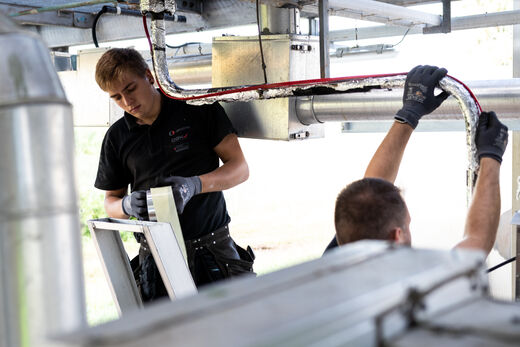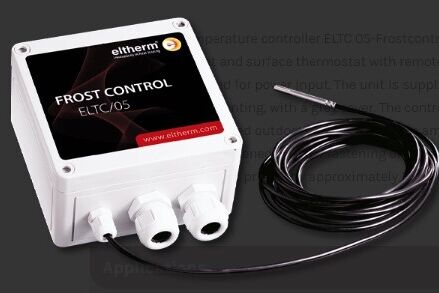Pipe heat tracing
If the standard insulation around your pipes or tanks is not sufficient to keep them frost-free or to achieve/maintain the desired production temperature, you can use heat tracing. This involves placing heating around the pipe or tank.
The tracing exists both in electric execution with a self-regulating strip, and in steam execution via a steel tube. This creates a double-walled pipe according to the au bain marie principle.

Types of tracing
Constant power heating strip
Regardless of the environmental temperature, the heating strip generates a constant amount of heat.
Self-regulating tracing
A self-regulating tracing strip is a heating cable that automatically adjusts its heat output based on the environmental temperature. It regulates itself by changing its resistance in response to temperature changes. This makes it efficient and suitable for preventing freezing of pipes, tubes and other installations in environments where cold can be a problem, such as in industry. The strip is often used in industries such as petrochemicals, food processing and water treatment.
Heat tracing
For higher temperatures up to 250° C, we opt for heat tracing.

Thermostat or frost control
In tracing, we offer a thermostat for heat pipes, programmable from 0°C to +390°C.
A frost control, with a fixed temperature range of +3°C, is needed in colder environments. This prevents water pipes from freezing and bursting, which can lead to serious damage to buildings and infrastructure.
Tracing combined with insulation
The most efficient solution is to combine tracing with the insulation of your pipes. CGK takes into account pipe dimensions, environmental temperatures, desired temperatures and your energy bill.
Heating your pipes via tracing?
Leave your details and get all the information you need.